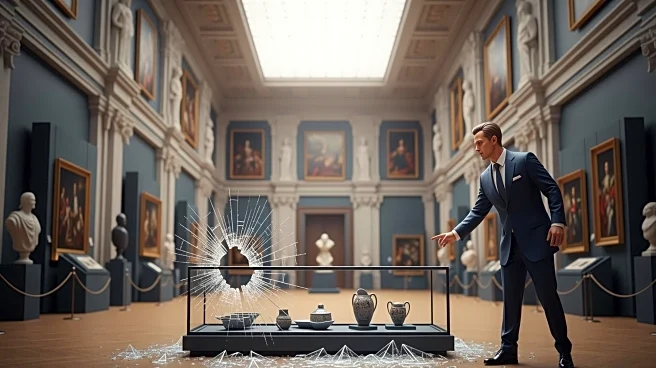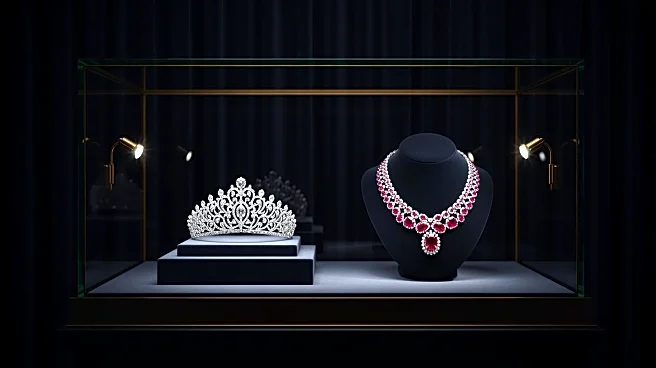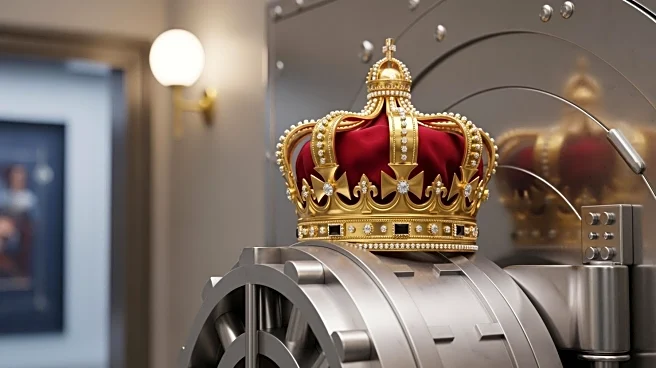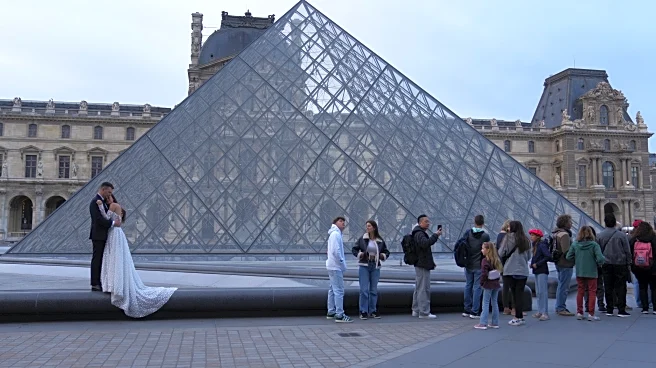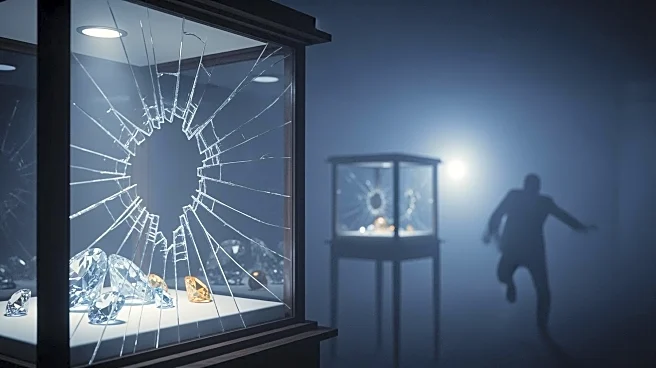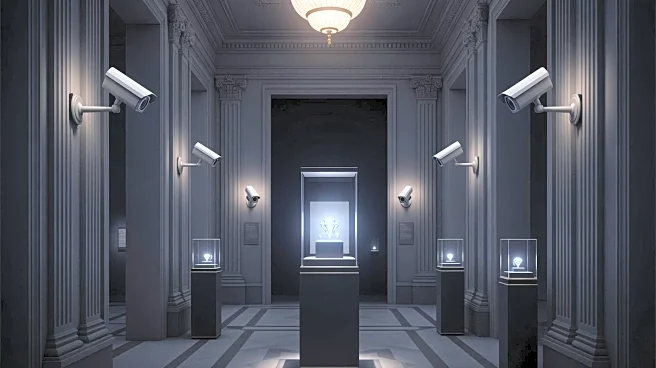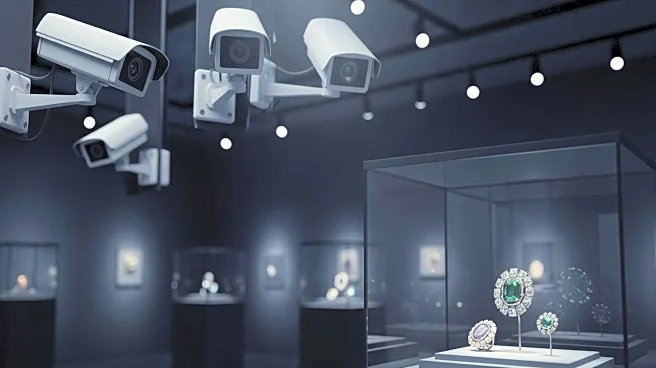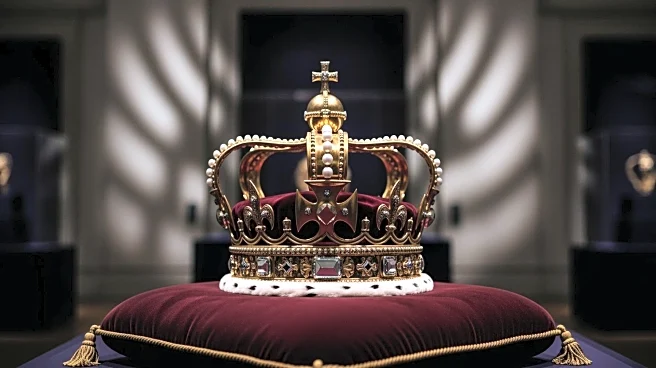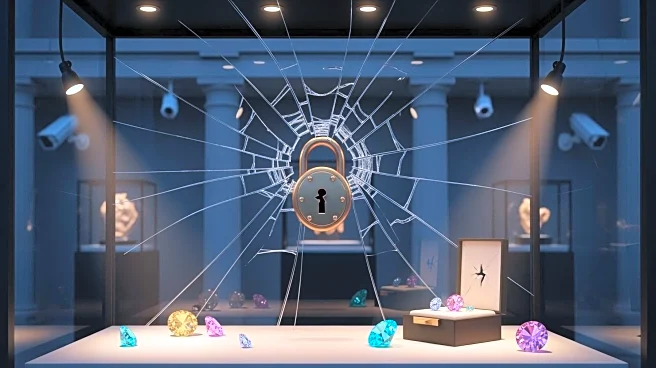What's Happening?
French authorities have arrested two suspects in connection with the recent theft of jewellery from the Louvre Museum in Paris. The arrests were made on Saturday evening, with one suspect apprehended at Paris-Charles
de Gaulle Airport while attempting to board a flight to Algeria. The second suspect was arrested shortly after in the Paris region. Both individuals are in their 30s and are known to French police. The theft involved eight pieces of jewellery, including an emerald-and-diamond necklace given by Napoleon Bonaparte to Empress Marie-Louise. The stolen items are valued at approximately $102 million and hold significant cultural importance. The heist, which occurred in broad daylight, involved the suspects climbing a ladder to access a first-floor gallery, exploiting a security blind spot.
Why It's Important?
The arrest of the suspects is crucial in addressing the security concerns surrounding cultural institutions in France. The theft has sparked a debate about the adequacy of security measures at such venues, especially given the Louvre's status as the world's most-visited museum. The stolen jewellery, with its historical significance, represents a loss not only in monetary terms but also in cultural heritage. The incident highlights vulnerabilities in museum security systems and the need for enhanced protective measures. The recovery of the stolen items is vital to preserving France's cultural legacy and maintaining public trust in the security of national treasures.
What's Next?
French authorities are expected to continue their investigation to recover the stolen jewellery and apprehend any additional perpetrators involved in the heist. The ongoing manhunt involves tracking the suspects through public and private security cameras and analyzing DNA samples and fingerprints found at the scene. The incident may lead to a reevaluation of security protocols at cultural institutions across France, potentially resulting in increased surveillance and preventive measures to safeguard against future thefts. The arrests may also prompt discussions on international cooperation in tracking and recovering stolen cultural artifacts.
Beyond the Headlines
The theft at the Louvre Museum underscores the ethical and legal challenges in protecting cultural heritage. It raises questions about the responsibility of museums to ensure the security of their collections and the role of law enforcement in preventing art crimes. The incident may influence global discussions on the protection of cultural property and the need for international collaboration in combating art theft. Additionally, the theft could impact tourism, as concerns over security might deter visitors from attending museums and cultural sites.
